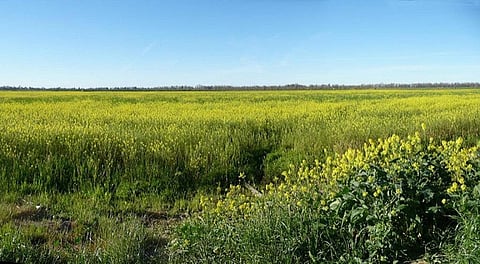

The Coalition for a GM-Free India, a network of organisations and individuals, has demanded the rejection of commercialisation or “environmental release” application related to transgenic mustard hybrid, DMH-11, or genetically modified mustard.
In a strongly-worded statement, the coalition alleged that “massive failures and rigged mechanisms” were adopted for research, development and testing of GM mustard.
The Genetic Engineering Approval Committee (GEAC), under the environment ministry, met on Monday to discuss commercialisation of genetically modified mustard. The coalition of NGOs alleged that despite asking, it was not given enough time to present to the GEAC on the concerns related to the crop, and hence, it walked out of the meeting.
The outcome of the GEAC meeting was not known till the time of filing the story.
If approved, GM Mustard would be the first genetically-engineered food in India. The transgenic mustard hybrid, DMH-11, has been developed by the Centre for Genetic Manipulation of Crop Plants, University of Delhi.
The Coalition for a GM-Free India alleged that the Delhi University scientists notched up yield increases through DMH-11 within already rigged protocols by around 7.5 per cent at least.
The organisation has also written to the environment and the science ministries, demanding the immediate rejection of environmental release application for GM Mustard, scrapping of the GEAC and stopping funds among others.